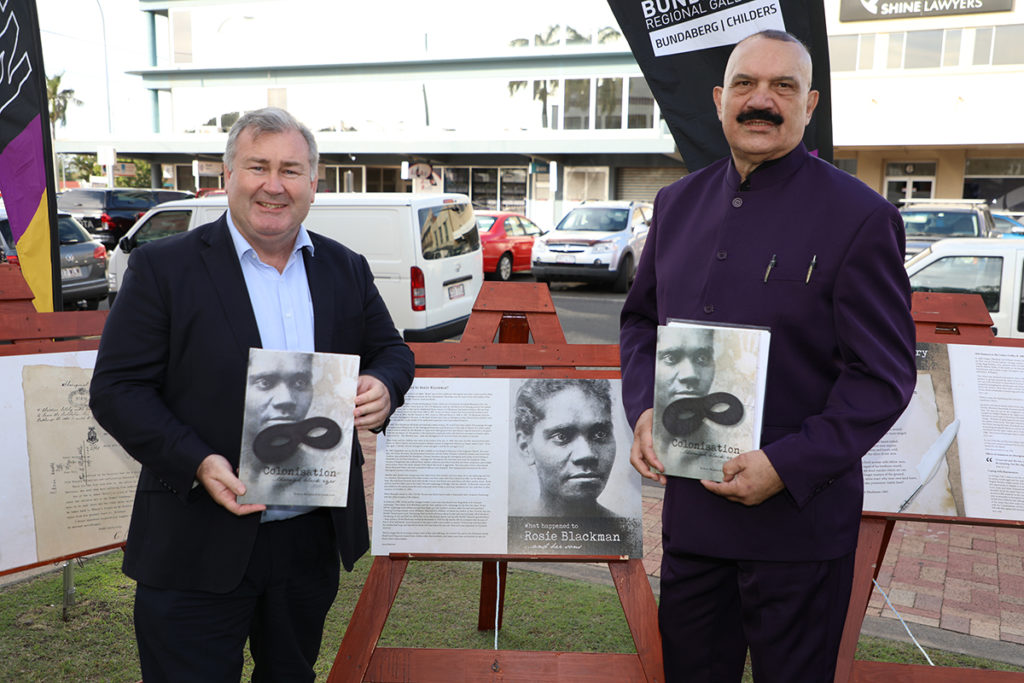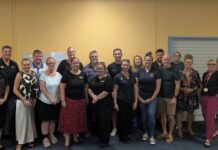
Colonisation Through Black Eyes by Dr Kerry Blackman and Dr Lysbeth Ford tells the story of local history from an Indigenous perspective.
Indigenous leader and Gidarjil Development Corporation general manager Dr Blackman said his book had been well received by both First Nation people and the general public.
Colonisation Through Black Eyes was launched at Bundaberg Regional Art Gallery on Thursday, with a welcoming reception from the community, including Councillors and Mayor Jack Dempsey.
Dr Blackman said the project took about six months to complete with help from prominent linguist Dr Ford and funding from the National Museum.
Pictured on the front of the book is Dr Blackman’s ancestor Rosie Blackman, and her story about how she was separated from her family and relocated to Fraser Island is shared through the pages.
“The book certainly is a game changer,” Dr Blackman said.
“It’s a tool for change, treaty, and truth telling.
“It has certainly passed my expectations so far, and I’ve had feedback from all over Australia.
“I’ve had a wide range of feedback, that has even come from professors, I am quite proud of it.”
Mayor Dempsey congratulated Dr Blackman and Dr Ford on writing the book: Colonisation Through Black Eyes.
“I’m sure the finished work will add to the body of historical and social literature on British colonisation,” he said.
“Most of the early research was written from the perspective of Government officials and white farmers.
“The Indigenous perspective was overlooked, wrongly seen as unimportant, or it was presented in a paternalistic manner.
“The social value of this book is immense because it tells the story from an Indigenous viewpoint.”
Dr Blackman said Colonisation Through Black Eyes was a timely publication, and he hoped it would be offered as an educational resource in schools and universities around the country.
“Everyone in parliament in Canberra has a copy, and I think that’s important,” he said.
“I believe it’s an educational tool that showcases the history and gives recognition of the four local Indigenous groups.”
- Other news: Gin Gin history intact as time capsule recovered








It is great to see this research and indigenous viewpoint promoted to our community. I hope to see more work from Dr Blackman as a follow up. Perhaps an indigenous viewpoint on where they would like to see Australia in the future. If ever there was a time in history to hear and absorb their wisdom and message, it is right now.
Thank you; how can we get hold of a copy?
Very good point, it would be really valuable to start hearing more about where/how/what our First Nations People hope for the future. Or, making those messages more visible and accessible so we can hear them more readily. ????